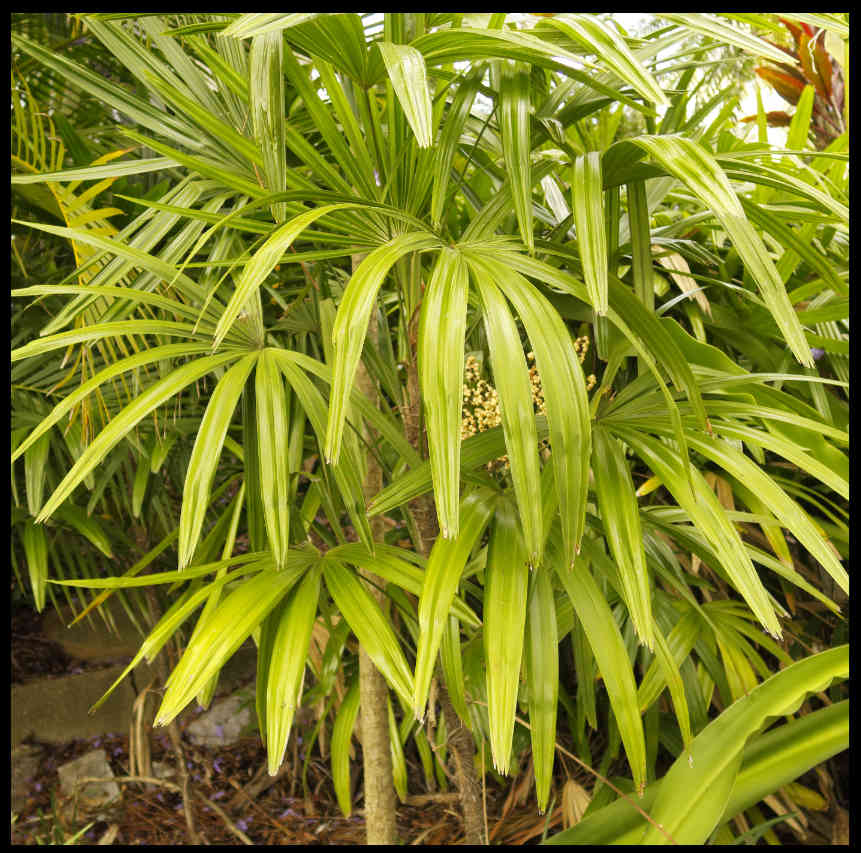Most Lady palms are native to S. China with some in Thailand and 1 in North Sumatra.
There are 11 species of the dwarf to small clustering fan palms.
Slender stems grow from rhizomes (underground stems).
Suckers, growing from the spreading rhizomes form the clusters.
Clumps can be up to 6 m high and wide.
Stems are covered with leaf sheaths with 2 layers of woven fibres.
The fibres cross each other forming a square or diagonal mesh.
When the sheaths eventually fall the stems are green with prominent ring scars.
Palms can have up to around 20 palmate leaves.
Leaves are on a thin petiole with smooth edges and no spines.
Young leaves and petioles have matted brown hairs that are mostly lost on older leaves.
Where the petiole meets the blade there is a raised ridge on the upper surface.
This is the hastula and there is none on the lower surface.
The hastula can be triangular and may have few to dense brown hairs.
Leaflets radiating from the hastula have the edges folded up (induplicate).
This gives intact areas of the blade a pleated appearance.
The blades split into long narrow individual leaflets or segments of a few.
The splits may extend almost to the base or any distance from it.
Any undivided area at the base is called the palman.
Leaflets have a finely toothed edge and prominent cross veins.
The pointed tips are split for a short distance.
This gives the flat ends of segments a jagged appearance.
Male and female inflorescences are on different palms.
The panicles, on a short peduncle are between the leaves.
Peduncles may not be visible when they are shorter than the leaf sheath.
There is a tubular prophyll (bract) at the base of the peduncle.
It has 2 longitudinal keels and splits between them on the upper (inner) surface.
There are no peduncular bracts.
Female panicles spread out more than the males.
The inflorescence midrib (rachis) is longer than the peduncle.
The 1 or 2 bracts on it are tubular.
Panicles are branched 2 or 3 times with small bracts at the base of the branches.
The final branches (rachillae) have spirally arranged flowers.
Flowers, mostly solitary have a tiny bract at the base.
Flowers have 3 small thick sepals and 3 longer fleshy petals.
Segments in both whorls have their bases fused.
Male flowers have 6 stamens with the filaments fused to the corolla tube for most of their length.
The short free ends have a small anther that opens sideways.
The tiny aborted ovary (pistillode) is 3-lobed.
Female flowers have an ovary with 3 locules each with 1 ovule.
The short style, wider at the top has a tubular stigma with minute hairs.
Fruit are a drupe with 1 seed as 2 of the ovules usually abort.
They are white or purplish-brown with some fibres in the fleshy layer.
J.F.


